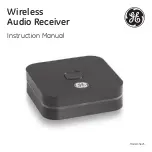
MDS 05-4846A01, Rev. F
SD Series Technical Manual
13
This type of network can also be used for general Ethernet bridging as
supported by the over-the-air bandwidth of the system. Bridge filters are
available to reduce Ethernet traffic over the RF channel, and improve
performance.
Port Sharing with Multiple Hosts
The transceiver allows for several external data networks to use the
same RF network without confusing the data streams. In such a system,
multiple host computers at the Master Unit poll their respective RTUs,
which may be alone or co-located at the Remote sites. Figure 8 shows
an example of such a system. In this case, two host computers (Host A
and Host B) are connected to the Master Unit via the applicable data
ports.
At the Remote sites, serial and Ethernet-based RTUs are employed, and
responding to a specific host computer. In the case of the Remote shown
on the lower right side of the figure, two RTUs are co-located, but
responding to different host computers and handling entirely different
data streams.
The SD eliminates the need for an external adapter or special external
configuration and handshaking when multiple host systems are con-
nected to an SD network. The SD automatically controls access to the
RF channel by multiple hosts when Packet w/MAC is activated. Virtual
Radio Channels (VRCs) are used to separate serial data streams on
COM2, COM1, or IP payload ports. Packet With MAC operation pro-
vides Media Access Control. It is the recommended method of operation
for port sharing systems.
NOTE:
An option exists to operate in Packet mode without MAC.
However, this Packet mode option should only be used for
systems that use legacy methods of collision avoidance
including
Multihost
and
Listen Before Transmit (LBT)
. The
mode
Packet with MAC
provides superior performance and
better network reliability, collision avoidance and better
overall throughput. See corresponding sections of this manual
for more information on Packet mode options.
















































